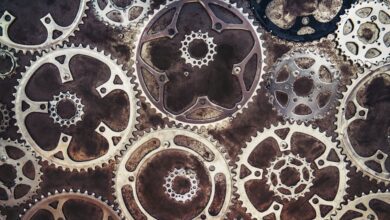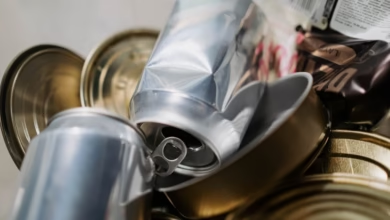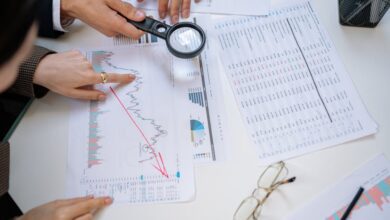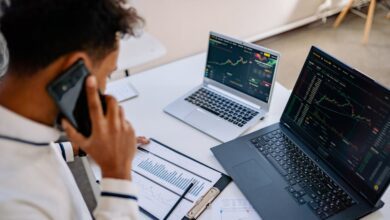Metals in Motion: Exploring Industrial Demand, Investment Dynamics, and the Future of Precious Resources

In an era marked by rapid technological advancement and shifting economic landscapes, the role of metals in both industrial applications and investment markets has become increasingly significant. This article delves into the multifaceted world of metals, exploring how silver serves as a dual asset—valuable in both industrial applications and as a sought-after investment. We will examine the correlation between copper prices and global economic health, highlighting how fluctuations in this base metal can serve as indicators of broader economic trends. Additionally, the rise of green energy technologies has intensified demand for rare earth metals, which are critical for the production of renewable energy solutions.
As we navigate through these themes, we will also compare platinum and palladium as investment options, assess how metals can diversify investment portfolios, and analyze the effects of inflation on precious and industrial metal prices. Furthermore, we will look ahead to the future of aluminum in a sustainable economy and consider the impact of mining regulations on metal prices. Join us as we uncover the intricate relationships between these metals and their roles in shaping both our industrial landscape and investment strategies.
- 1. Silver's Dual Role: Industrial Applications and Investment Appeal
- 2. Copper Prices as Economic Indicators: Understanding Global Trends
- 3. Navigating the Green Revolution: The Rising Demand for Rare Earth Metals
1. Silver's Dual Role: Industrial Applications and Investment Appeal
Silver plays a unique dual role in both industrial applications and as an investment vehicle, making it a versatile metal in today's economy. On one hand, silver is an essential component in various industrial sectors due to its remarkable conductivity, thermal properties, and resistance to corrosion. It is widely used in electronics, solar panels, batteries, and medical instruments, with the demand for these applications driven by technological advancements and the transition to greener energy solutions. For instance, the increasing adoption of solar technology has significantly boosted silver consumption, as it is a key material in photovoltaic cells.
On the other hand, silver is also viewed as a safe-haven asset, similar to gold. Investors turn to silver during periods of economic uncertainty or inflation, viewing it as a hedge against currency devaluation. The metal's intrinsic value, along with its historical significance as a form of currency, contributes to its allure among investors. Moreover, silver's price often moves in tandem with gold, providing a potential for profit in the precious metals market.
This dual role creates a complex dynamic for silver prices. While industrial demand can drive prices up, fluctuations in investment sentiment can lead to volatility. Investors must consider both the industrial outlook—which is increasingly optimistic due to green technologies—and the broader economic environment that influences investment behavior. As industries innovate and global economic conditions evolve, silver's dual role will likely continue to shape its market presence, making it an essential consideration for both industrial stakeholders and investors alike.
2. Copper Prices as Economic Indicators: Understanding Global Trends
Copper prices are often viewed as a barometer for global economic health due to the metal's widespread use in various industries, including construction, electronics, and transportation. As a key component in electrical wiring and plumbing, copper demand typically rises in times of economic expansion, reflecting increased industrial activity and infrastructure development. Conversely, when economic conditions weaken, demand for copper tends to decline, resulting in lower prices.
Several factors contribute to the fluctuations in copper prices, including supply chain dynamics, geopolitical events, and changes in manufacturing output. For instance, disruptions in major producing countries, such as Chile and Peru, can lead to supply shortages, driving prices up. Additionally, economic indicators such as GDP growth rates, manufacturing purchasing managers' indices (PMIs), and construction activity can provide insights into potential shifts in copper demand.
In recent years, the rise of emerging markets, particularly China, has significantly influenced copper prices. China is the largest consumer of copper, and its economic policies and construction initiatives have a profound impact on global demand. As such, analysts closely monitor Chinese economic data to gauge future movements in copper prices.
Furthermore, the transition to renewable energy and electric vehicles is expected to bolster copper demand in the coming years. The increasing reliance on copper for wiring, batteries, and other components in green technologies suggests that its role as an economic indicator will continue to evolve. Investors and policymakers alike should pay attention to copper price trends, as they not only reflect current economic conditions but also signal potential future developments in global markets.
3. Navigating the Green Revolution: The Rising Demand for Rare Earth Metals
The transition to green energy technologies is significantly driving the demand for rare earth metals, which are crucial components in the production of various clean energy solutions. These metals, including neodymium, dysprosium, and lanthanum, play essential roles in the manufacturing of high-efficiency batteries, permanent magnets for wind turbines, and catalysts for electric vehicles (EVs). As governments and industries worldwide commit to reducing carbon emissions and investing in renewable energy sources, the reliance on rare earth metals is expected to increase substantially.
The growth of electric vehicles is one of the most prominent factors contributing to this demand. EVs require large quantities of rare earth metals for their batteries and electric motors, making them key players in the automotive revolution. Furthermore, the rise of energy storage systems, which are vital for harnessing intermittent renewable energy sources like solar and wind, also relies on these metals to enhance efficiency and performance.
However, the supply chain for rare earth metals presents challenges. These materials are not as widely available as other minerals, and their extraction is often concentrated in specific regions, notably China, which dominates global production. This concentration raises concerns regarding supply security and geopolitical risks. As a result, countries and companies are exploring alternative sources and recycling methods to ensure a stable supply, which may involve investing in domestic mining operations or developing technologies to recover rare earth elements from used products.
In summary, the green revolution is reshaping the landscape for rare earth metals, creating both opportunities and challenges. As demand surges to support sustainable technologies, stakeholders must navigate supply chain complexities and environmental considerations to capitalize on this growing market.
In conclusion, the multifaceted roles of metals in both industrial applications and investment landscapes underscore their significance in today's economy. Silver stands out with its unique position, serving not only as a valuable investment asset but also as a critical component in various industrial applications. Meanwhile, copper's price movements offer valuable insights into the health of the global economy, reflecting broader trends in demand and production. The green energy revolution has further amplified the need for rare earth metals, highlighting their essential role in advancing sustainable technologies.
As the debate between platinum and palladium continues, investors must weigh the potential returns and market dynamics of each metal. Additionally, the strategic inclusion of metals in investment portfolios can provide diversification benefits, particularly in times of inflation when the prices of both precious and industrial metals tend to fluctuate. The future of aluminum appears promising, especially as industries pivot towards sustainable practices, while mining regulations will undoubtedly play a crucial role in shaping metal prices and availability.
Overall, understanding the interplay between these metals and their respective markets offers valuable insights for investors and industry stakeholders alike, paving the way for informed decisions in an ever-evolving economic landscape. As we move forward, staying attuned to these trends will be essential for navigating the complexities of the metal markets and harnessing their potential in a sustainable future.





